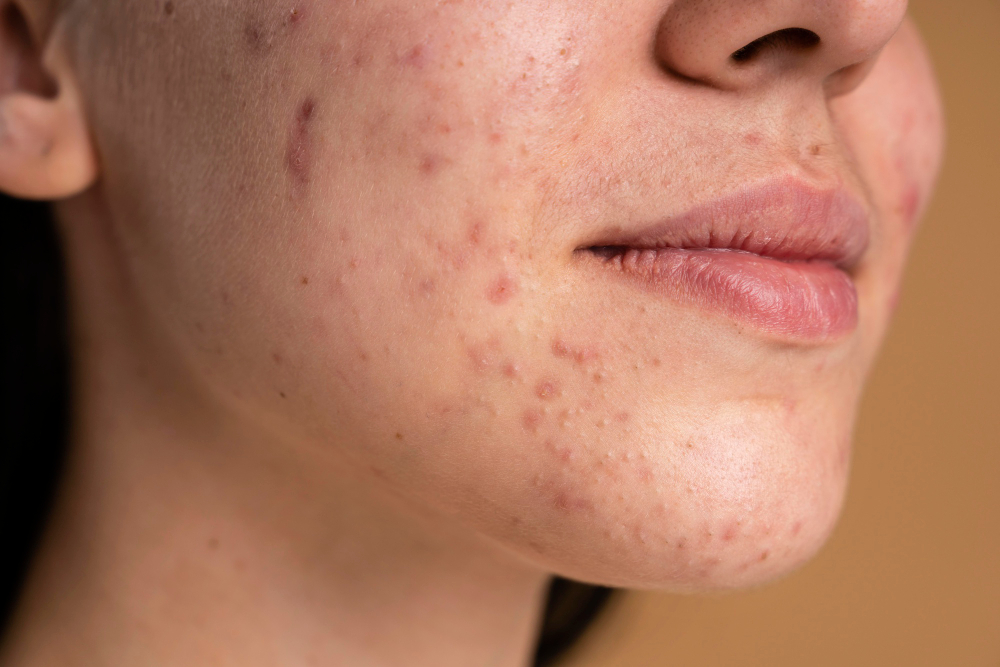Rosacea
Rosacea is a chronic skin condition characterized by facial redness, flushing, visible blood vessels, and in some cases, papules and pustules. It can be a source of frustration and discomfort for those affected. While there is no cure for rosacea, dermatology and aesthetic treatments can help manage the symptoms and improve the overall appearance of the skin.
You need proper medical intervention to plan your rosacea treatment.
1. Medical Interventions:
Dermatologists play a crucial role in diagnosing and treating rosacea. They may recommend oral or topical medications to control inflammation and reduce redness. Common medications prescribed for rosacea include antibiotics, topical metronidazole, azelaic acid, and anti-inflammatory creams. These treatments can help manage flare-ups, reduce inflammation, and control the symptoms associated with rosacea.
2. Laser and Light Therapies:
Laser and light-based therapies have revolutionized the treatment of rosacea. They target blood vessels, reduce redness, and improve overall skin tone. Some common laser and light treatments for rosacea include:
– Intense Pulsed Light (IPL) Therapy: IPL uses pulses of light to target and reduce the visible blood vessels associated with rosacea. It can also help alleviate redness and improve skin texture.
– Pulsed Dye Laser (PDL) Therapy: PDL specifically targets the blood vessels, reducing redness and flushing associated with rosacea.
– KTP Laser: KTP laser treatments selectively target blood vessels and reduce redness, effectively managing the symptoms of rosacea.
3. Chemical Peels:
Chemical peels, specifically designed for sensitive skin, can be beneficial in treating rosacea. They exfoliate the outer layer of the skin, reducing redness, promoting cell turnover, and improving the appearance of rosacea-related bumps and blemishes. Mild chemical peels, such as those containing lactic acid or salicylic acid, are usually recommended for individuals with rosacea.
4. Topical Treatments:
Topical treatments, in the form of creams or gels, can help control the symptoms of rosacea. They often contain ingredients like azelaic acid, metronidazole, or brimonidine, which help reduce inflammation, redness, and flushing. These topical treatments are typically applied to the affected areas of the face and can be used in conjunction with other treatment modalities.
5. Skin Care:
Proper skin care plays a vital role in managing rosacea. Using gentle, non-irritating cleansers, moisturizers, and sunscreens specifically formulated for sensitive skin can help minimize irritation and protect the skin from triggers that may worsen rosacea symptoms. Avoiding harsh exfoliants, fragrance, and excessive heat can also help maintain the skin’s health.
While there is no cure for rosacea, dermatology and aesthetic treatments offer various options to manage the symptoms and improve the appearance of the skin. Medical interventions, laser and light therapies, chemical peels, topical treatments, and proper skin care can all contribute to reducing redness, controlling inflammation, and enhancing overall skin health. Consulting with a dermatologist or qualified aesthetic professional is essential to develop a personalized treatment plan that addresses your specific needs and concerns. Take charge of your rosacea management journey and discover the treatments that work best for you, allowing you to enjoy a more comfortable and confident life with your skin.


